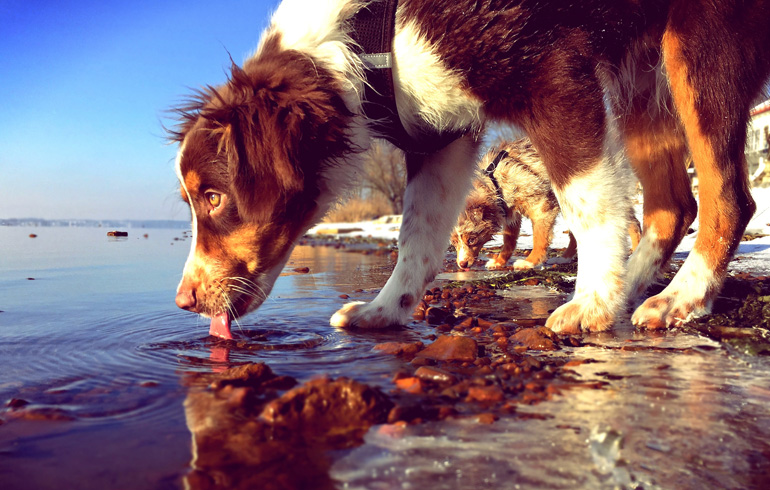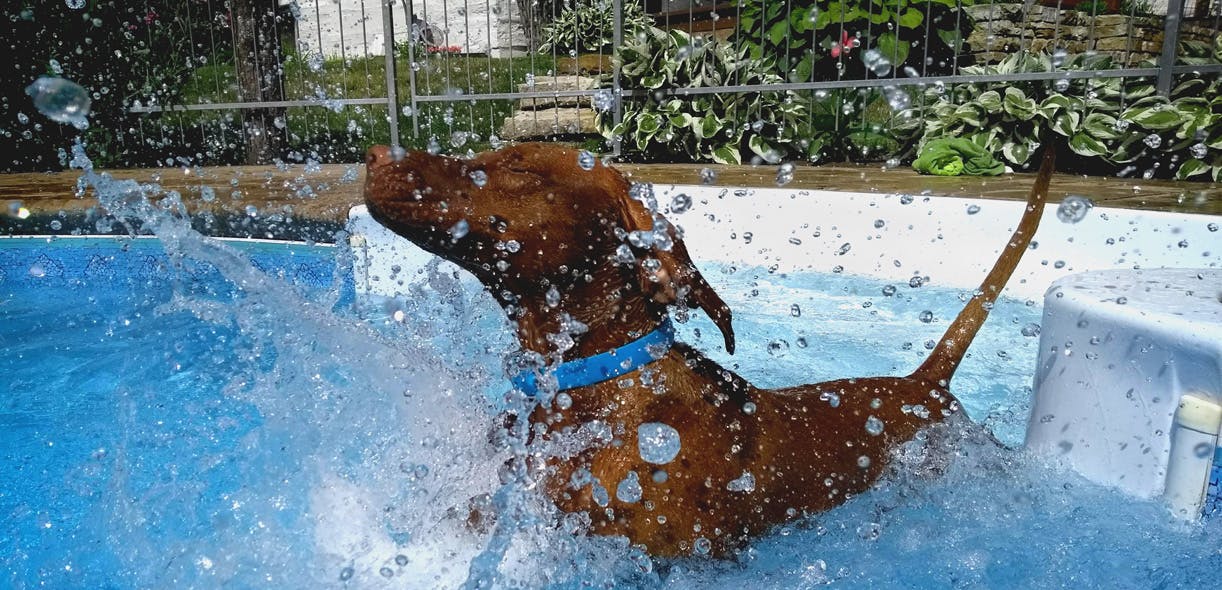Be aware of water currents
When in a river or ocean, swim only where currents are weak and waves small. Strong currents can quickly lead to exhaustion and potential drowningâeven among the strongest swimmers.

Sailing fans: Think life vest
The moment you step onto a boat, equip your dog with a life vest. For added safetyâand to help avoid fatigue-related accidentsâconsider having your dog wear its life vest during routine swims.
Have food and drink ready
When your dog sees the ocean, it may think itâs looking at one large drinking bowl. Ingesting salt water is harmful to dogs and can lead to extreme dehydration. Limit the length of your dogâs salt-water swims and prevent them from drinking the water. Be sure to have food and fresh water available at all times.

Watch out for cyanobacteria
Cyanobacteriaâsuch as blue-green algae, slimy âmossâ or âscumâ and a powdery film on the surface of the waterâare increasingly common. Their toxins can be harmful to humans and potentially fatal for dogs. Without a laboratory test itâs impossible to know if the cyanobacteria youâve encountered are indeed toxic. Find out more here. If youâre not sure about a potential location, donât swim! If your dog shows signs of weakness or digestive problems, consult a veterinarian immediately.
Make sure vaccinations are up-to-date
Stagnant water is often contaminated with wild animal urine which can help create the perfect conditions for the proliferation of bacteria causing leptospirosis, a serious disease which affects the kidneys and the liver and is transmissible to humans. It can be virtually impossible to completely avoid these areasâanother reason why itâs essential that your petâs vaccinations are up-to-date.
Sunscreen: Not just for people
Like people, dogs are also susceptible to sunburn and heat stroke. Those with lighter fur are more sensitive to the sun; a sunblock cream for dogs can be applied after swimming. Pay extra attention to areas with less fur, such as the stomach, ears, nose and the hind quarters.
A good rinse: Your dogâs second-best friend
Sea water contains salt and sand which can irritate your dogâs skin, causing redness and swelling. The water in lakes, rivers and ponds can be breeding grounds for bacteria and parasites which youâll want to keep at a distance. Sand in the eyes and ears can cause painful lesions. Our suggestion? Always rinse off your dog with clean, clear water after your swim.

Ears: Keep your eyes on them
Aside from sand, all other foreign bodies (soil, insects, mud, plants) can lead to ear infections. Bacteria and infection causing fungi also thrive in moist conditions. Itâs a good idea to dry your dogâs ears (especially if theyâre droopy), and to clean out your dogâs external ear canal using a product thatâs adapted to companion animals. Ears must be kept clean and dry at all times.
Be safe, be careful and enjoy the last days of summer!
Cover: Josée Larivée
Photo 1: Ian Matyssik
Photo 2: Justin Bülow
Photo 3: Taylor Griffith
